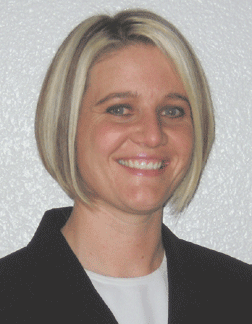Q&A
Futures For You
 Inside The
Inside The
Futures World
Want to find out how the futures markets really work?
DeCarley Trading senior analyst and broker Carley Garner responds to your questions
about today's futures markets. To submit a question, post your question
at https://Message-Boards.Traders.com. Answers will be posted there, and selected questions will appear in a future issue of S&C.
Full Service Or Self Service?
Should I use a full-service futures and option broker or trade for myself online?
This is a decision that is often made with little research or thought but has the potential to have the biggest impact on the bottom line. I would argue that traders should put nearly as much effort into finding a broker and determining the service type that fits their needs and desires as they do researching the markets that they will be trading.
Making a mistake in the choice of your service level can be costly. An inexperienced trader opting for a deep-discount online rate may accumulate far more in market losses and trade placement errors than paying a full-service broker would have ever cost. This is not to imply that a full-service broker will assure accurate speculation and prevent losses, but using a good broker may avoid some of the common newbie mistakes. In addition, it is possible that having an experienced broker to bounce ideas off of may improve results.
Here’s an example. I have witnessed too many novice traders enter into the softs futures market through the illiquid Nymex versions of the contracts as opposed to the more liquid Ice futures. The lack of trading volume can lead to tremendous bid/ask spreads and make it difficult to exit the market, let alone come out with a profit. A trader who may have saved $20 in commissions could suffer several hundred dollars (or even thousands) in market losses by not knowing enough about futures trading.
On the other hand, there are those who are familiar with the mechanics of the futures and option markets and can competently place trades. These traders probably don’t need the help of a full-service broker and shouldn’t overpay for services. That said, don’t assume that some experience in trading equities will be sufficient for you to jump into online futures trading. For those who feel they are ready to be on their own, I suggest using a broker or firm offering reasonable rates combined with efficient and reliable service.
While low-transaction costs should be a priority for those capable of self-directed online trading, it shouldn’t be the sole deciding factor. There are firms offering insanely cheap commission rates, but you will get what you pay for. Should there be a time you have technical support problems or customer service issues, it may be difficult to come to a timely resolution. Imagine being placed on hold for long periods of time to resolve whatever issues you may have. Then imagine this occurring when you have open positions in a market going wildly against you.
Thus, it is critical you balance price and functionality rather than basing your decision exclusively on transaction costs. When it comes to the costs of trading, transaction costs are only the beginning.
Treasury Futures Contracts
We all know what bonds and notes are, but what does a Treasury futures contract represent?
Similar to a commodity-based futures contract, Treasury futures represent the delivery of the underlying asset. Futures contracts allow the buyer and the seller to agree upon a price today for delivery and payment of the asset on a future date. What makes Treasury futures more complicated than most is the fact that the underlying is more difficult to define than it is for, say, corn or soybeans.
In its simplest explanation, the underlying instrument for the Chicago Board of Trade’s 30-year bond, 10-year note and five-year note is a $100,000 US Treasury security. So which of the specific fixed-income securities is reflected by the price of the futures contract? There is certainly more than one maturity date for each of these securities with various coupon payments, and so on.
A Treasury futures contract is essentially a proxy or could even be considered an index for a variety of issues within a range specified by the exchange. The securities represented in the price of the futures contract includes all of those eligible for delivery based on Cbot standards. Here is where many people get lost — the Cbot has developed a conversion factor system to allow the futures contract price to reflect the range of available fixed-income issues.
Conversion factors are assigned to each cash market bond or note that meets time maturity specifications for the particular futures contract expiration. Each bond or note eligible for delivery will be provided a conversion factor by the Cbot. The factor allotted by the exchange represents the price in terms of percentage, at which $1 par of a security would trade if it had a 6% yield to maturity. Bond or note issues with a coupon less than 6% will have conversion factors less than 1 to reflect that the security is priced at a discount. Those with coupons greater than 6% will have conversion factors greater than 1 to reflect that the coupon is priced at a premium.
As you can tell, the intricacies of the conversion factor is beyond our scope here. However, it is important to realize that the net effect of the conversion factor is to link the different prices of the bonds and notes eligible for delivery to create a single price of the corresponding standardized futures contract.
The price of the futures contract typically doesn’t correspond to the prices seen in the cash market. However, it is important to note that the current yield will always be the same in reference to the futures market vs. the cash market.